The iPhone 6 Review
by Joshua Ho, Brandon Chester, Chris Heinonen & Ryan Smith on September 30, 2014 8:01 AM EST- Posted in
- Smartphones
- Apple
- Mobile
- iPhone 6
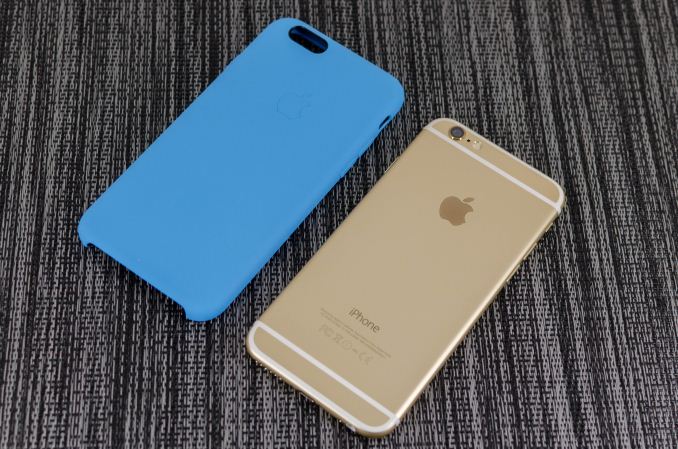
With every launch of the iPhone, Apple seems to have everything to lose and not much to gain. Apple’s iPhone line accounts for the majority of profits in the smartphone space, and as the smartphone market marches towards maturity it seems inevitable that companies like Xiaomi will be able to deliver largely similar experiences at much lower prices. The same once happened with Apple in the days of the PC industry where Apple approached irrelevance. Yet generation after generation, Apple seems to be able to hold on to a majority of profit share, and they’ve managed to tenaciously hold on to their first-mover advantage.
This brings us to the iPhone 6. This is now the eighth generation of the iPhone, and the fifth generation of the iPhone’s industrial and material design. We should note right now that this review is specifically for the iPhone 6; for the iPhone 6 Plus, please see our iPhone 6 Plus companion review. At this point, it’s not really possible to revolutionize the smartphone, and on the surface, the iPhone 6 seems to be directly inspired by the iPod Touch. However, instead of the chamfered edge where the display meets the metal unibody we see a continuous curve from the sloping glass to the metal unibody that looks and feels great. While the M8 was one of the best phones for in-hand feel, the iPhone 6 goes a step further due to the reduced weight and rounded side. I've always felt like the HTC 8X had one of the most compelling shapes for a phone, and the incredibly thin feel of the iPhone 6 definitely reminds me of that.
Along the left side, we see the standard volume buttons and mute switch that continue to have the same solid feel and clean clicking action. As I discuss in the iPhone 6 Plus review, going by Consumer Reports' data it seems that there is a weak point near the bottom of the volume rocker, although it's far less likely to be an issue on the iPhone 6 due to its smaller size. Along the top, there isn’t a power button because it’s been moved to the right side of the phone so there’s nothing notable on the top.
On the right side, we see the previously mentioned power button and also the SIM tray, which is ejected by inserting a pin into the eject hole. Similarly to the volume buttons, the power button has a solid feel that gives a distinct click when triggered and continues to be quite unique when compared to phones other than recent iPhones.
The bottom has the Lightning connector, speaker, a microphone, and 3.5mm headset jack. The placement and design of all these elements are largely similar if not shared directly with the iPod Touch.
The back of the phone continues to share elements from the iPod Touch. The camera, microphone, and LED flash are almost identical in their appearance, even down to the camera hump’s design. The LED flash does look different to accommodate the second amber flash, but the shape is identical. The only real difference is that the antennas of the iPhone 6 are the metal pieces on the top and bottom, with the associated plastic lines instead of a plastic RF window.
The front of the phone is decidedly more similar to the iPhone 5s though, with the Touch ID home button. While the earpiece hasn’t moved, it seems that the front facing camera has been moved back to the left side of the earpiece, and the sensors for light and proximity are now above the earpiece. For the most part, there’s not much to comment on here but after using the iPhone 6 for an extended amount of time I’m definitely sure that the home button is relatively closer to the surface of the display glass than before. In addition, the home button has a dramatically improved feel, with short travel, clean actuation, and a reassuring click in most cases.
Overall, while I was undecided at the launch of the iPhone 6 I definitely think the look of the new iPhone has grown on me. The camera hump’s accent serves as an interesting design touch, and the feel of the design is definitely much more comfortable and ergonomic than before. I’m not really sure that the extra reduction in thickness was necessary, but it does make for a better first impression. In the launch article I was a bit surprised that Apple chose to have a camera hump but given the fact that the iPod Touch has the same design it seems that there is precedent for such a move. I personally feel that the design wouldn’t be worse by increasing thickness to eliminate the hump and improve battery life as a result.
Apple has also introduced a new silicone case, which brings a lower price point than the leather cases. Surprisingly, this is a rather high quality case, and as far as I can tell it doesn’t carry any of the issues that silicone cases traditionally have. There’s a nice lip to make sure that the display glass doesn’t touch a surface if the phone is put face down, and the material doesn’t seem to stretch or attract pocket lint the way most silicone cases do.
There’s definitely a lot more to talk about though, and to get a sense of the major differences I’ve put together our usual spec table below.
| Apple iPhone 5s | Apple iPhone 6 | Apple iPhone 6 Plus | |
| SoC | Apple A7 | Apple A8 | Apple A8 |
| Display | 4-inch 1136 x 640 LCD | 4.7-inch 1334 x 750 LCD | 5.5-inch 1920 x 1080 LCD |
| WiFi | 2.4/5GHz 802.11a/b/g/n, BT 4.0 | 2.4/5GHz 802.11a/b/g/n/ac, single stream, BT 4.0, NFC | |
| Storage | 16GB/32GB/64GB | 16GB/64GB/128GB | 16GB/64GB/128GB |
| I/O | Lightning connector, 3.5mm headset | ||
| Size / Mass | 123.8 x 58.6 x 7.6 mm, 112 grams | 138.1 x 67 x 6.9 mm, 129 grams | 158.1 x 77.8 x 7.1 mm, 172 grams |
| Camera |
8MP iSight with 1.5µm pixels Rear Facing + True Tone Flash 1.2MP f/2.4 Front Facing |
8MP iSight with 1.5µm pixels Rear Facing + True Tone Flash 1.2MP f/2.2 Front Facing |
8MP iSight with 1.5µm pixels Rear Facing + True Tone Flash + OIS 1.2MP f/2.2 Front Facing |
| Price | $99 (16GB), $149 (32GB) on 2 year contract | $199 (16GB), $299 (64GB), $399 (128GB) on 2 year contract | $299 (16GB), $399 (64GB), $499 (128GB) on 2 year contract |
As you can see, this is a major release even at a high level. While the design might take some inspiration from the iPod Touch, the hardware is a completely different beast. There’s a new SoC, the A8; the iPhone 6 also includes a bigger and better display, newer WiFi module, bigger battery, and a better camera. Of course, there’s a lot more to the story of the iPhone 6 than a spec sheet. The first major difference that we’ll talk about is the SoC.


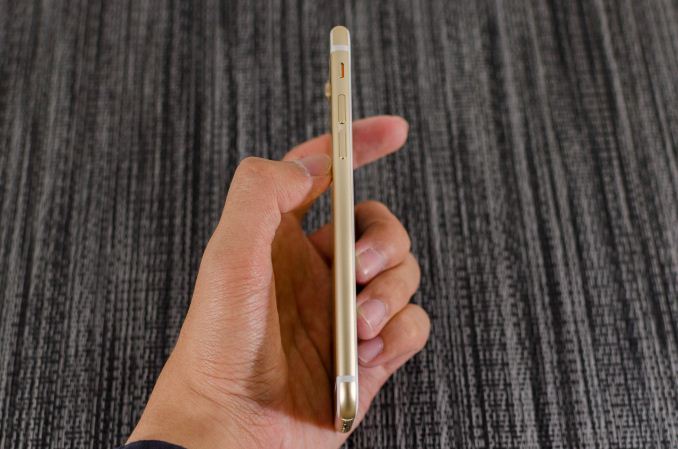
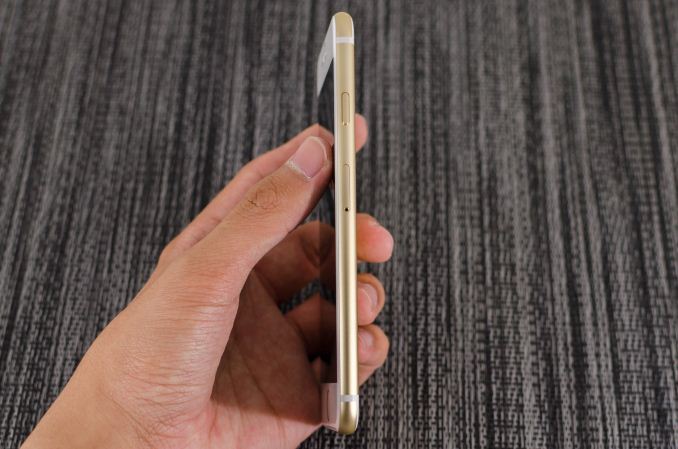
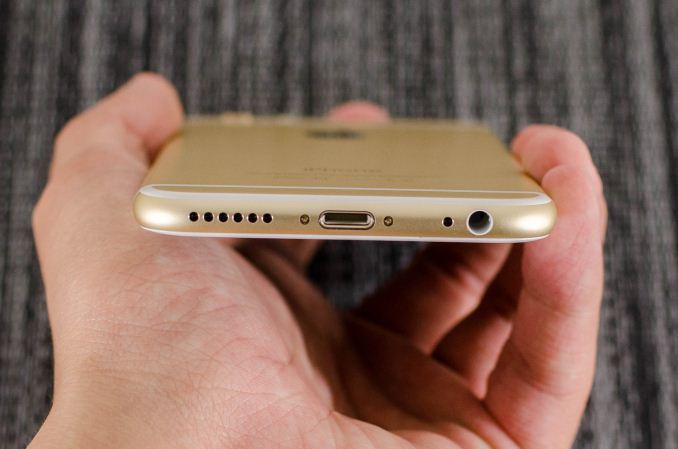
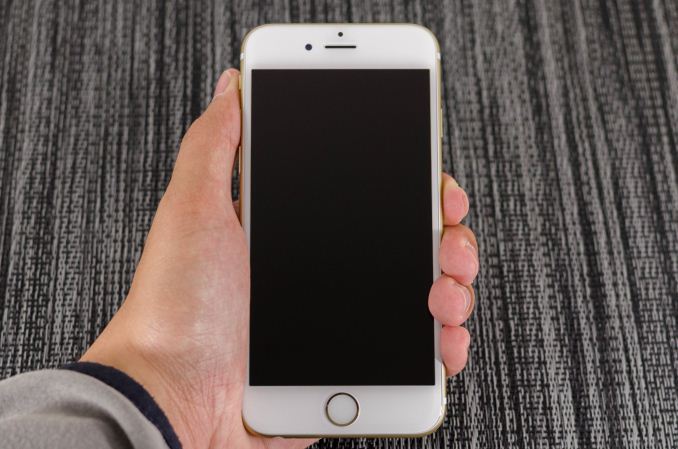
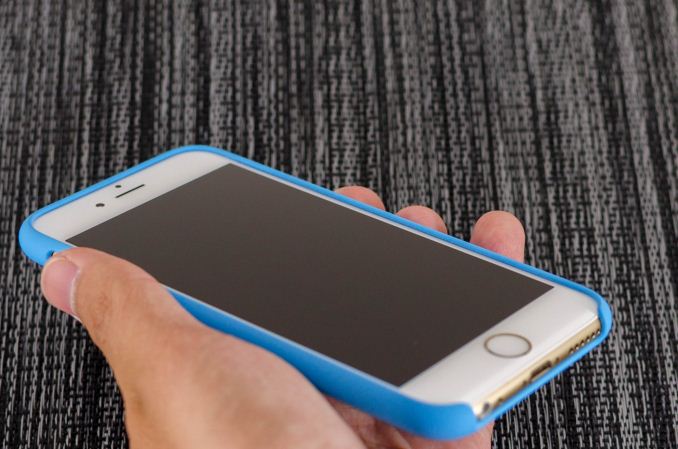








531 Comments
View All Comments
Torakaru - Thursday, October 2, 2014 - link
Which Galaxy did you used? Because I have been reading around that 1GB is not enough and many users complaint about it (doesnt matter if iPhone5/5s/6/6+ or last year iPad's) as for instance the Safary crashes/fully reloads even after more than a couple of tabs in use.Ryan Smith - Thursday, October 2, 2014 - link
"Could you be so kind to be more precise about that feeling that you have? It is due lack of RAM for multitasking, or also for single tasks?"It's a lack of RAM for multitasking. At some point the OS will reach its limit and be forced to evict apps and/or cached Safari tabs. The 5S and 6 have a it a bit worse than the 5 due to the fact that the AArch64 processors in the 5S and 6 require additional RAM to be allocated to the OS to operate the 32bit and 64bit user lands simultaniously.
refineryorker - Wednesday, October 1, 2014 - link
The other interesting thing I noticed about this review and many of the top performing non I phones is that for American consumers, a lot of these phones don't really exist to purchase on the major U.S. carriers.I visited the t mobile, sprint, Att, and Verizon websites and
The Hauwei honor 6, the Samsung Galaxy s5 broadband lte a, Nokia lumia 930, Nokia lumia 630, and the Xperia z1s don't exist on those websites.
The Samsung Galaxy s5 T-Mobile only exists for T-Mobile.
The HTC one e8 is only on sprint.
So all this means is that the List of phones that Americans can purchase looks vastly different than the top performing non iPhones on the above list.
Most non iPhones that Americans can purchase aren't top performers.
roncron - Wednesday, October 1, 2014 - link
I've read at least 15 reviews of the iPhone 6, including the excellent review at iLounge.com. But this review is the best of them all. Very thorough and scientific. The review, while long, is also well-written and nicely organized.Ryan Smith - Thursday, October 2, 2014 - link
Thank you.cknobman - Wednesday, October 1, 2014 - link
I take your battery test results with a grain of salt when it comes to actual real world use. I know they are scientific but it just seems they paint the iPhones as having great battery life when in reality it blows.We have two iPhone 5s in our house, an LG G2, a Nokia Lumia 1520, and a SG4.
In practical use the iPhone's cant even get through 3/4 of a day without being drained dry.
The SG4 can barely make it to evening.
The LG G2 can make an entire day easy but needs to be recharged every day.
The Nokia can go 2 days without being charged.
Before getting the iPhone 5s's I read reviews thinking that those things should get better battery life than the SG4, most of that opinion coming from reviews like yours. Little did I know that those thoughts were bogus.
I dont expect much more practical battery life from and iPhone 6 either. This is not isolated to my house either.
munim - Wednesday, October 1, 2014 - link
It doesn't seem like you're trolling so think about the following factors:I'm assuming different people are using each phone. They probably have different usage habits, different apps syncing, different amount of apps syncing, maybe one person uses the phone more outdoors using higher brightness / GPS / LTE as opposed to wifi.
zhenya00 - Wednesday, October 1, 2014 - link
Without some context your comparisons are useless. I presume the phones are owned by different family members and see different usage patterns. Perhaps some of them are backup or work/non-primary phones. Perhaps the iPhones used more heavily than the others as is often the case (I have family members who own iPhones and have work provided Blackberries - I bet they'd say the iPhone has poor battery life as all but which one are they using all day and which one sits on the counter?)You could have bad backups you've restored to them that cause drains, or other problem software. My 5s tended to see about 2.5 hours of 'use' per day, and I'd tend to get about 5 usage hours and 2 days between charges. The 6 seems to be giving me closer to 7-8 hours of use, and again, 2 days of standby.
cknobman - Wednesday, October 1, 2014 - link
I cannot give you exact usage patterns for all of the phones.BUT
The iPhone 5s's and the LG G2 are used by my 3 teenagers (two 16, one 14). They all do plenty of facebooking, instagraming, messaging, and tweeting. While non of them have the exact same usage pattern I can safely say that they are all similar. I find it ironic that the two iPhones just happen to be unable to get through a 8 hour period without losing charge. I had to buy both of those phones battery cases for my kids. The LG G2 on the other hand has never had a battery problem.
As for the SG4, that is used by my wife who is a facebook, instagram, and pintrest junky. She can drain a battery on anything in a day. Usually her phone makes it from morning until night but sometimes she kills it before bedtime.
The Nokia is mine and it gets a decent amount of use. During the day not a lot of things going on it while I am at work outside of games when Im in the restroom and during lunch. Once at home it is my primary source of access to anything digital I need. I dont touch a computer once I leave the office.
beggerking@yahoo.com - Wednesday, October 1, 2014 - link
I have the same conclusion with mine. Nokia seem to last forever on tiny batteries.